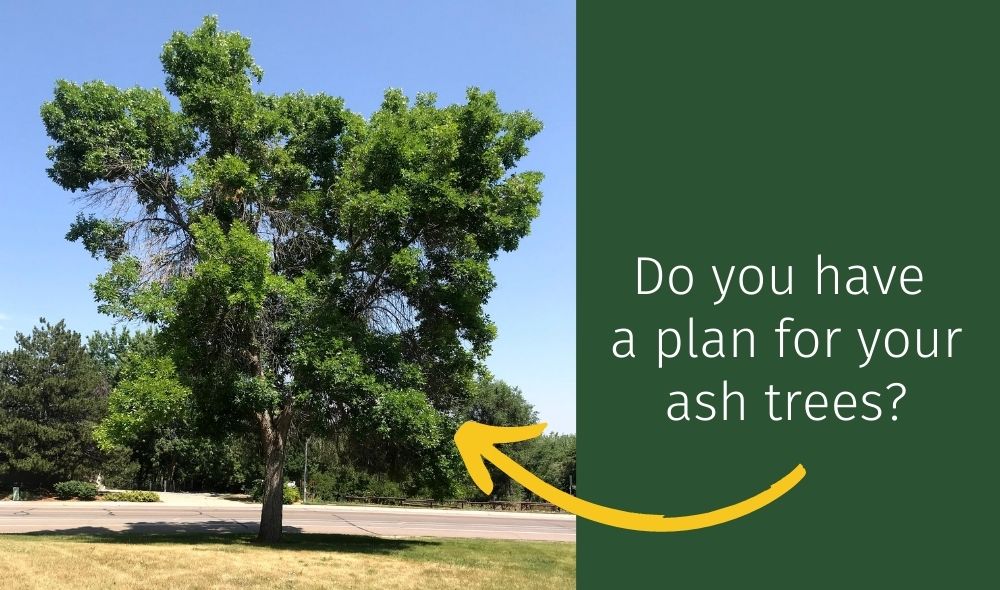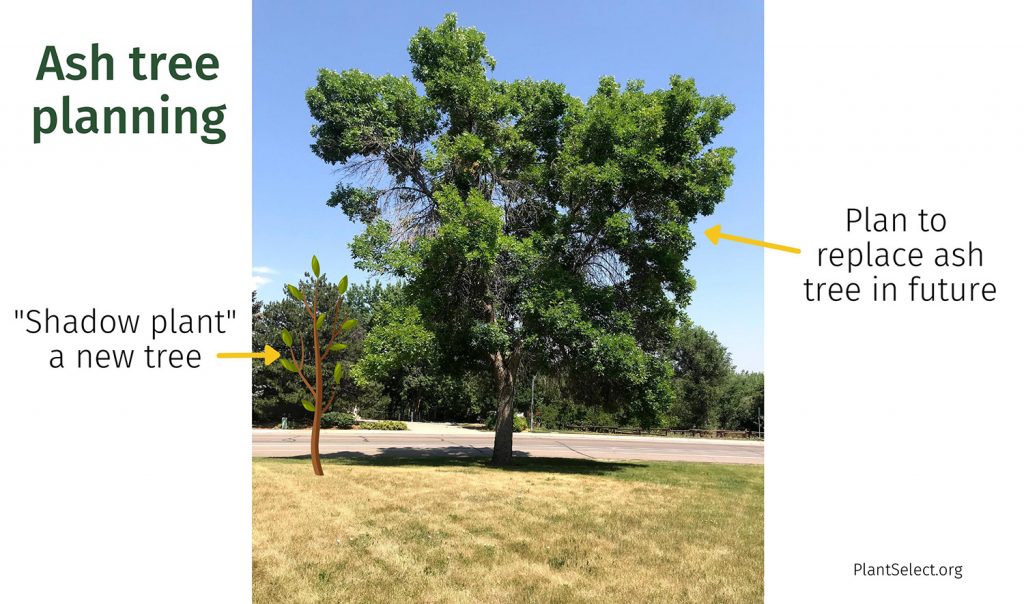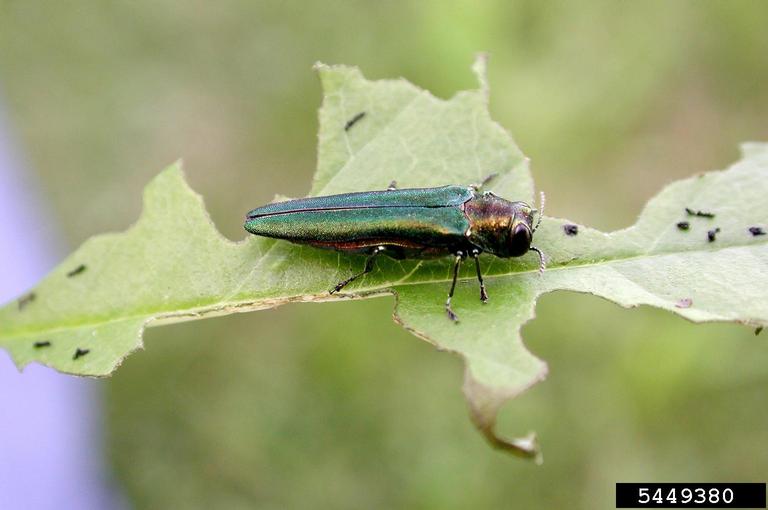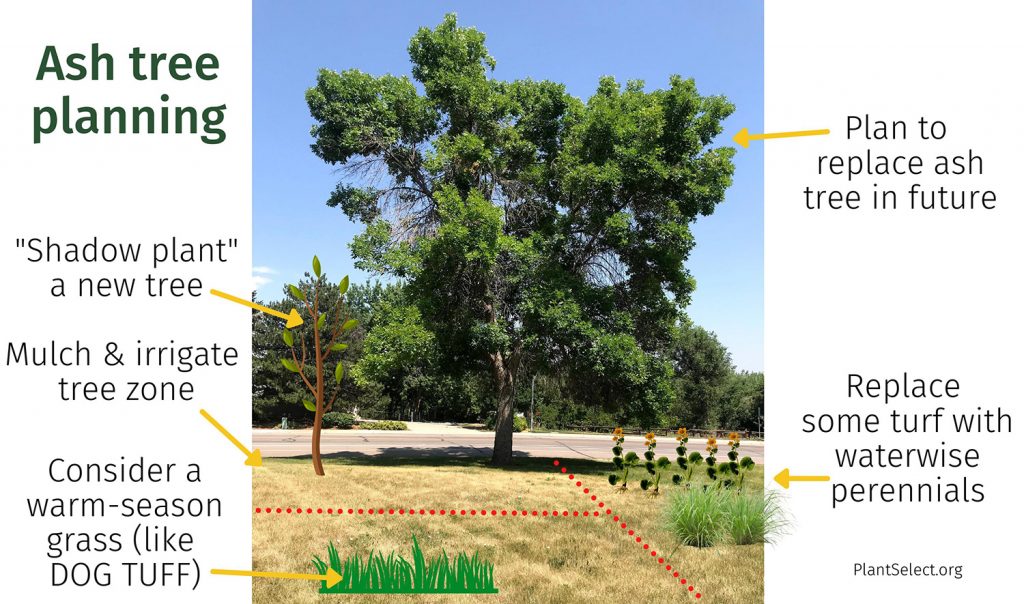How Emerald Ash Borer Will Affect HOA Landscape Budgets
Sooner rather than later in Colorado’s Front Range!
Last month, we chatted about awkward turf spaces that can be costly to maintain. This month we want to shift our focus to ash trees… and how they will affect your HOA’s landscape budget in the near future if you live in Colorado’s Front Range.
What is Emerald Ash Borer?
The Emerald Ash Borer is a highly destructive insect that infests and kills North American true ash trees (Fraxinus species). Since the early 2000s, it has killed millions of ash trees in the Midwest. The entire City of Boulder was presumed infested at the close of 2015. As of February 2022, Emerald Ash Borer also has been found in north Fort Collins, down through parts of the northern metro Denver area, in the Littleton area of Arapahoe County and in Carbondale in the mountains. (You can view a map here.)
Ash trees are a common tree in Colorado’s urban forests.
It’s estimated that about 1 in 7 trees is an ash.
In some cities, like Fort Collins, 1 in 3 trees is an ash.

So, how does Emerald Ash Borer affect your HOA?
If you live in the Front Range of Colorado:
Even if Emerald Ash Borer hasn’t been spotted where you live yet, it’s important to have a plan.
It can help you reduce disruptions to your property values and manage costs when Emerald Ash Borer reaches your area.
First…
Make the time to walk your property and determine how many ash trees you have.
If you aren’t sure what ash trees look like (Fraxinus species), learn how to identify ash trees here. You’ll find an app to help you.
Second…
Know that you have options.
Many municipalities are exploring a combination of the following options to get ahead of the expense and disruption of the Emerald Ash Borer. The same options apply for HOAs and individual homeowners.
- You can proactively remove your ash trees. If you wish to replace your ash trees with other trees, be sure to choose tree species other than ash (Fraxinus species). And ideally, look for trees that are well suited for our climate and soils. The CSU Extension has a tree recommendation list for the Front Range. This is also a good opportunity to rethink your landscape and make it more waterwise.
- You can temporarily keep your ash trees… but plant “shadow trees” that will replace your ash trees long term. This means you plant a different species of tree close to an existing ash tree. This gives the young tree a few years to get established and grow before you remove the ash tree. That way, it isn’t such a stark change when you remove the ash tree.

- You can decide whether you want to try to save any of your ash trees. If yes, you will need to pursue an insecticide treatment plan at some point to try to control Emerald Ash Borer damage. Now is a good time to start evaluating whether your HOA community wants to invest in chemical treatments. You may not need to start this annual treatment plan yet, but it’s wise to start saving for it. Please reach out to your local CSU Extension office to find out when to begin ash tree treatments in your area.
For ballpark budgeting purposes:
Emerald Ash Borer treatments can range from $100-$200 per tree/per year for the rest of the tree’s life. (These are estimates only. Pricing varies by the size of the tree and the treatment.) This expense does not include pruning costs every 4-5 years. You may want to budget $500-$1000 per ash tree per pruning, but again, this can vary.
Money-saving tip:
Check with your city to see whether it offers a program to help subsidize treatment or removal of ash trees on private property.
Keep in mind:
Yes, you can put this off… but at some point, your HOA will face these decisions. It’s not a matter of “if” your ash trees will be affected with Emerald Ash Borer. It’s a matter of when.
It will be much less disruptive—and potentially less expensive—to get ahead of these decisions now, even if it just means planning and saving.

Photo credit: Debbie Miller, USDA Forest Service, Bugwood.org
Do you live in another part of the intermountain West—like Utah or Wyoming?
If yes, it’s best to stop planting true ash species (Fraxinus species) in your landscapes.
As Entomologist Dr. Whitney Crenshaw explains, “Emerald ash borer is the real deal—a non-native species with a clear track record of being able to cause extreme damage. The question of its appearance in Utah is when it will appear, not if it will appear.“
We’re trying to see the silver lining here.
It’s devastating to lose mature trees—both from a financial perspective and an environmental one.
But Emerald Ash Borer is in Colorado. We can’t change that.
This is an opportunity to make water-smart planning decisions for our landscapes. The decisions you make now can yield long-term savings for your community, keep your property values up and enhance local ecosystems.
Here’s just one example of how you could rethink your landscape over time:

If you’re part of an HOA that is re-assessing its landscapes:
We’d be happy to speak with your board about key considerations, as well as plants that offer lasting benefits.
Please call Ross Shrigley of Plant Select at (970) 481-3429.
Where to find information on Emerald Ash Borer in Colorado:
- Tips for Front Range Residents on the Emerald Ash Borer | Colorado State Forest Service
- Commonly asked questions about Emerald Ash Borer | Colorado State University Extension (This is an older document—February 2014—but it still has helpful information. Keep in mind that the insect has spread since this publication was released.)
- Emerald Ash Borer update page | State of Colorado
You also may want to visit your local city government’s page for Emerald Ash Borer information.

